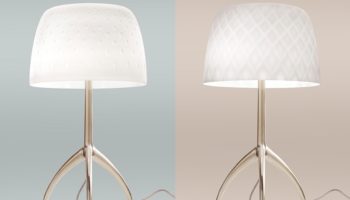Stephen Andersen’s Consequence Lamp
Ah, the ingenuity of the young. The portfolio of budding industrial designer Stephen Andersen suggest that there may be hope for us after all, since his products evince the kind of considered forethought we’ll need in handfuls if were to escape the impending doom of a bad economy, dwindling resources, a warming planet, etc… Perhaps foremost among said products is his Consequence Lamp.
Consequence Lamp. Designed by Stephen Andersen.
The Smart Science Behind the Consequence Lamp
The piece is an aesthetically intriguing and visually arresting desk lamp. Employing a simple materials palette of aluminum, glass, and wax, Andersen has turned the typical notion of a table lamp on its head by inverting the usual arrangement of base and shade.

The result is that the glass diffuser becomes the bottom and the power source/bulb becomes the top, deeding Consequence its unorthodox but appealing look, which is sort of like a millennial re-working of a classic lantern. However, in this case, that’s only the form following the function, as the prime draw of Consequence is its activist/educational bent.
Consequence—designed to create a more intimate connection between product and user, says Andersen—employs a waxy packing to both filter the light and provide a visual representation of the dissipation of energy. After about an hour of use, as the hidden light source builds heat, the wax begins to melt and drip down the sides of the diffuser, creating a “messy, inconvenient situation.”

The melting wax is a visual and tactile reminder that wasting energy has consequences, and the lamp thus promotes a greater awareness of the user’s environment, prompting—one hopes—more responsible behavior and greater ecological awareness.
Via Yanko.
About the Designer: Stephen Andersen has a lifelong yen for fixing things. Throughout his childhood in Roscoe Illinois, he made a habit of restoring cars, boats, and antiques—habits that fed his natural inclination of “taking things apart and discovering how things worked.” Now a student in Human Centered Design at Northern Michigan University, Andersen exhibited his original designs at the Salone Satellite in Milan this past April.




Leave a Reply